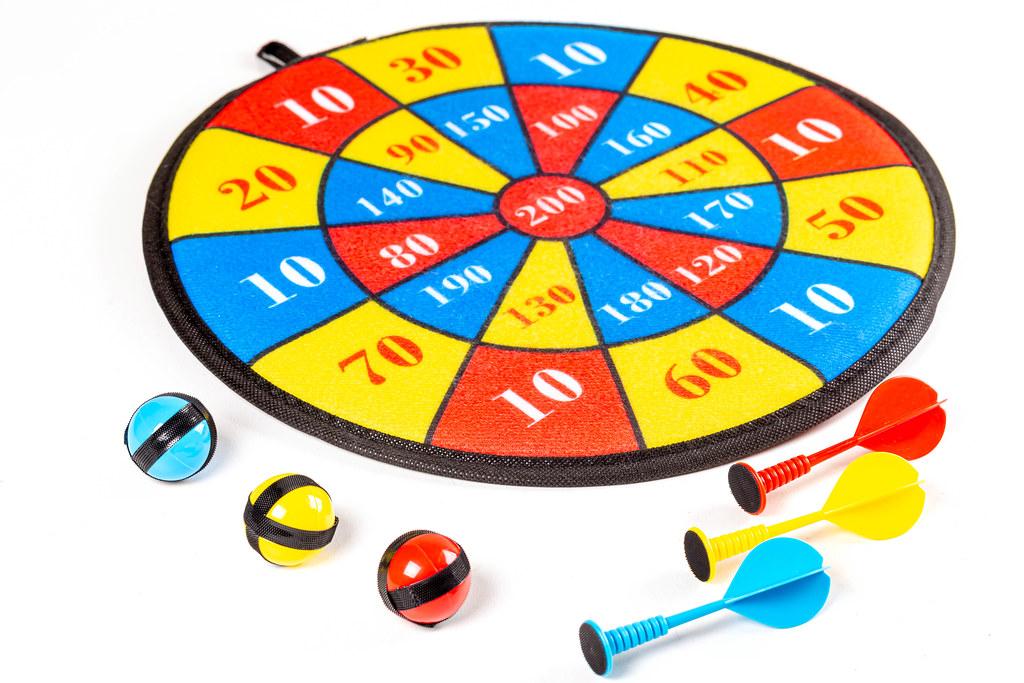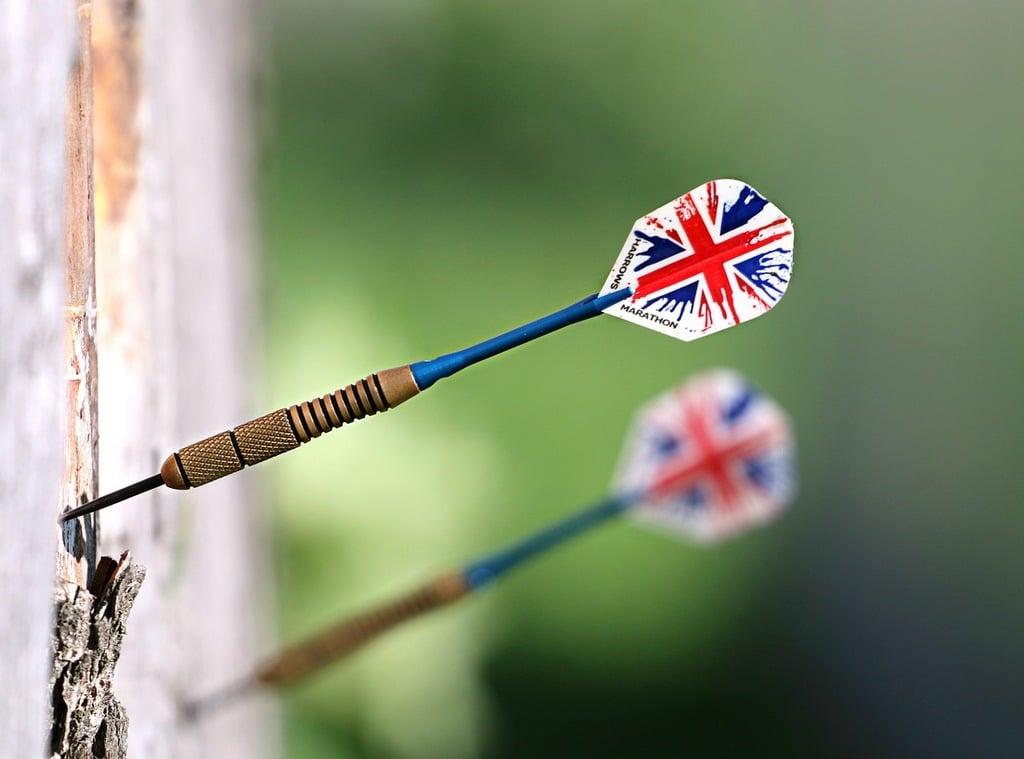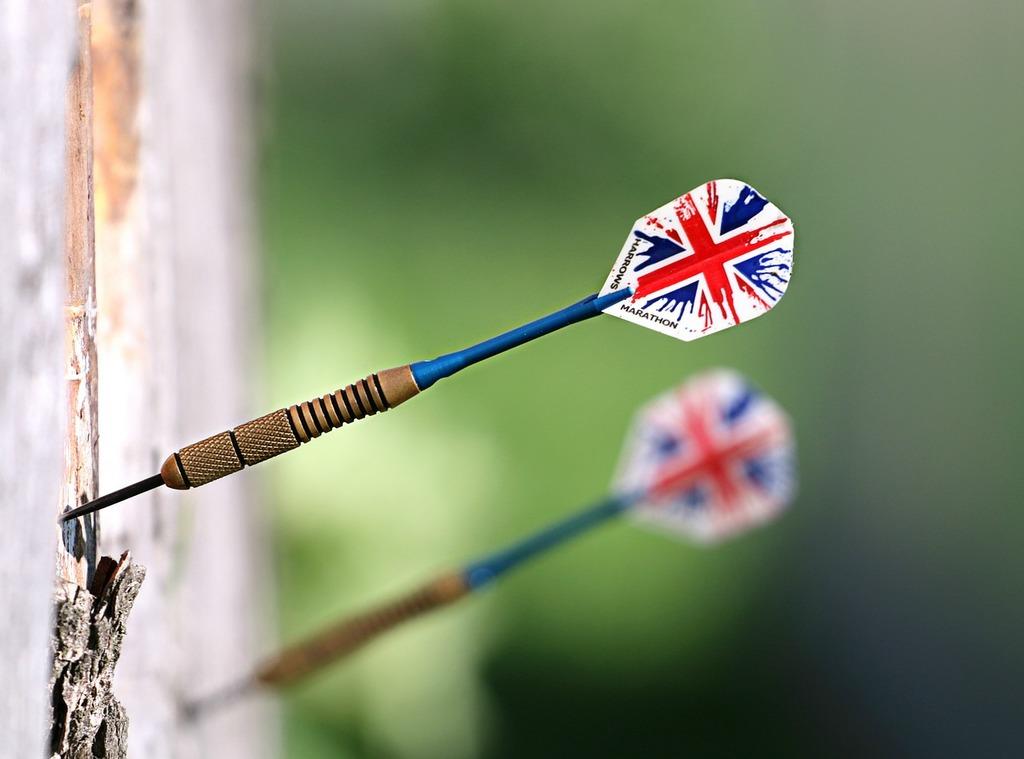Darts, a popular pub game, requires precision and skill. Becoming proficient at this game takes time and practice. While some natural talent helps, the average person can expect to take several months to a year to reach a level of proficiency. Consistent practice, proper technique, and understanding game strategy are key factors in mastering this enjoyable and competitive sport.
Tag Archives: sports
When it comes to aiming darts like a pro, technique and practice play key roles. Begin by ensuring a comfortable stance, gripping the dart with a relaxed hand. Focus on the target, maintain a consistent arm and wrist movement, and aim for the same spot with each throw. Regularly practicing these steps will gradually refine your skills and improve your accuracy.
Darts is a popular game enjoyed by many, but can you win by solely hitting the bullseye? The answer is no. While a bullseye awards high points, it’s only one of many strategic shots needed for victory. Skillful players focus on consistency, strategy, and accumulation of various scores to emerge triumphant. So, while the bullseye is important, it alone cannot guarantee success in the enthralling world of darts.
In the world of darts, the significance of the red color holds great importance. A red segment on the dartboard, known as the “double ring”, doubles the points scored when hit. This 20mm-wide ring demands precision and skill, providing players with a strategic advantage. Understanding the significance of the red segments can elevate a player’s performance and lead to greater success on the oche.
Darts is often perceived as an easy pub game, but mastering its techniques and strategies require dedicated practice. Precision, aim, and consistent control are vital for success. While beginners can easily pick it up, reaching an expert level demands skill development and mental focus. Ultimately, whether darts is a hard game depends on one’s commitment to honing their accuracy and adaptability.
Dart players often debate whether it’s better to throw with one eye closed or both eyes open. Closing one eye can improve focus and aim, but it comes at the cost of depth perception. Ultimately, the choice depends on personal preference and individual playing style. Experimentation and practice are key to finding what works best for each player.
Darts, a popular pub game, has long sparked a debate over the balance between skill and luck. While luck does play a role in hitting the bullseye, the game heavily relies on skill. Precision, hand-eye coordination, and strategy all contribute to achieving high scores consistently. Despite occasional fortunate shots, true darts champions consistently prevail, proving that it is indeed a game of skill rather than mere luck.
When it comes to playing darts, wearing a hat is a personal choice. While there are no hard and fast rules against it, some players prefer to avoid hats to ensure a clear line of sight. Factors like hat brims obstructing vision or interference with the throwing arm can impact performance. Ultimately, it’s up to the player’s comfort and confidence level to decide whether to wear a hat during a game of darts.
When it comes to darts, enthusiasts often use a slang term to refer to the game. The commonly used slang word for darts is “arrows”. This word has become popular among players and fans alike, adding a touch of excitement and camaraderie to the sport.
When it comes to playing darts, many believe that math skills are vital for success. While having good math abilities can certainly be advantageous for calculating scores, it is not a prerequisite to enjoy or excel at the game. Darts primarily relies on accuracy, precision, and strategy, making it accessible to players of varying mathematical skills. However, understanding basic math concepts can enhance one’s game and improve overall performance. So, while being good at math is not necessary for playing darts, having some numerical proficiency can provide an edge on the dartboard.
- 1
- 2



